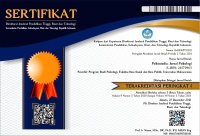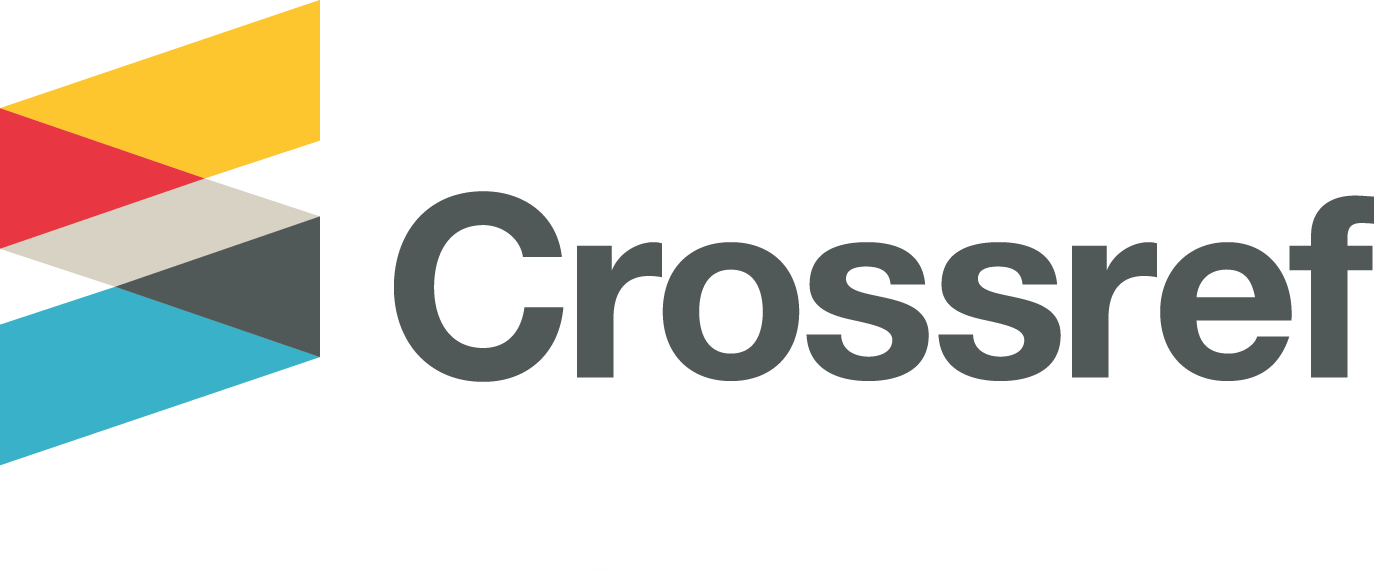Assertive Communication Skills Group Intervention for Adolescents with Social Anxiety
Abstract
National surveys show that most adolescents experience anxiety problems and anxiety disorders, but only a few seek professional help. Anxiety, especially social anxiety, can be detrimental to adolescents because of its impact on social success. If it persists, social anxiety can develop into social anxiety disorder as an adult. Thus, it is necessary to intervene in adolescents with high social anxiety. Adolescents with social anxiety often experience social situations that they cannot cope with due to a lack of social skills, especially assertive communication skills. This study aimed to see whether assertive communication skill interventions carried out in groups can improve adolescents' assertive communication skills and reduce social anxiety levels. Group interventions conducted in schools provide easy access for youth and efficiency in terms of time and cost. Group interventions also allow adolescents to voice their experiences, finding similarities and connect with others. The study participants were six teenagers aged 13-15 years with high levels of social anxiety. This study consisted of a pre-test, four intervention sessions, post-test, and follow-up. The Social Anxiety Scale for Adolescents (SAS-A) and Skala Tingkah Laku Asertif (STLA) were used to describe the participants' social anxiety and assertiveness before, after, and two weeks after the intervention. The results showed an increase in the STLA score and a decrease in the SAS-A score in most participants quantitatively and an increase in assertive communication skills and a decrease in social anxiety qualitatively in all participants. The implication of this study is that assertive communication skills intervention programs carried out in groups are beneficial in increasing assertive communication skills and reducing the level of social anxiety in adolescents, these results can be used as reference material in the intervention of adolescents with social anxiety.
Survei nasional menunjukkan bahwa mayoritas remaja mengalami masalah kecemasan dan gangguan kecemasan, namun sedikit yang mencari bantuan profesional. Kecemasan, terutama kecemasan sosial, bisa merugikan karena dampaknya terhadap kesuksesan sosial. Jika berlanjut, kecemasan sosial dapat berkembang menjadi gangguan kecemasan sosial saat dewasa. Dengan demikian, perlu dilakukan intervensi pada remaja dengan kecemasan sosial tinggi. Remaja dengan kecemasan sosial seringkali mengalami situasi sosial yang tidak bisa mereka atasi karena kurangnya keterampilan sosial, terutama keterampilan komunikasi asertif. Penelitian ini bertujuan untuk melihat apakah intervensi keterampilan komunikasi asertif yang dilakukan secara berkelompok dapat meningkatkan keterampilan komunikasi asertif dan menurunkan tingkat kecemasan sosial remaja. Intervensi kelompok yang diadakan di sekolah memberikan kemudahan akses bagi remaja dan efisiensi dari segi waktu serta biaya. Intervensi kelompok juga memungkinkan remaja menyuarakan pengalaman, menemukan kesamaan, dan berkoneksi dengan orang lain. Partisipan penelitian merupakan enam remaja berusia 13-15 tahun dengan tingkat kecemasan sosial tinggi. Penelitian ini terdiri dari pre-test, empat sesi intervensi, post-test, dan follow-up. Social Anxiety Scale for Adolescent (SAS-A) dan Skala Tingkah Laku Asertif (STLA) digunakan untuk mengetahui gambaran kecemasan sosial dan asertivitas partisipan sebelum, sesudah, dan dua minggu sesudah intervensi. Hasilnya, terdapat peningkatan skor STLA dan penurunan skor SAS-A pada mayoritas partisipan secara kuantitatif dan peningkatan keterampilan komunikasi asertif serta penurunan kecemasan sosial secara kualitatif pada seluruh partisipan. Implikasi dari penelitian ini adalah bahwa program intervensi keterampilan komunikasi asertif yang dilakukan secara berkelompok bermanfaat dalam meningkatkan keterampilan komunikasi asertif dan menurunkan tingkat kecemasan sosial pada remaja sehingga dapat menjadi bahan rujukan dalam intervensi remaja dengan kecemasan sosial.
Keywords
Full Text:
FULL TEXTReferences
Abdolghaderi, M., Kafie, M., & Khosromoradi, T. (2021). The effectiveness of assertiveness training on social anxiety and coping with stress among high school female students. Journal of Research in Psychopathology, 2(4), 23–29. https://doi.org/10.22098/jrp.2021.1198
Adi Rusmana, F., Dahlan, S., & Eka Andriyanto, R. (2018). Peningkatan Keberanian Siswa Berbicara Dalam Diskusi Kelas Menggunakan Konseling Kelompok Dengan Teknik Assertive Training The Improvement Of Students’ Courageousness To Speak In Class Discussion Using Group Conscients Using Assertive Training Techniques.
Ahmadi, H., Daramadi, P., Asadi-Samani, M., Givtaj, H., & Sani, M. (2017). Effectiveness of Group Training of Assertiveness on Social Anxiety among Deaf and Hard of Hearing Adolescents. Int Tinnitus J, 21(1), 14–20.
Ainiyah, H. R., & Cahyanti, I. Y. (2020). Efektivitas Pelatihan Asertif Sebagai Upaya Mengatasi Perilaku “Bullying” di SMPN A Surabaya. Psikostudia : Jurnal Psikologi, 9(2), 105. https://doi.org/10.30872/psikostudia.v9i2.3868
Arrindell, W. A., Sanderman, R., Hageman, W. J. J. M., Pickersgill, M. J., Kwee, M. G. T., Van der Molen, H. T., & Lingsma, M. M. (1990). Correlates of assertiveness in normal and clinical samples: A multidimensional approach. Advances in Behaviour Research and Therapy, 12(4), 153–282. https://doi.org/10.1016/0146-6402(90)90004-A
Berndt, T. J., & Perry, T. B. (1990). Distinctive features and effects of early adolescent friendships. From childhood to adolescence: A transitional period?, 2.
BPS. (2022). Penduduk dan Ketenagakerjaan.
Buckner, J. D., Bernert, R. A., Cromer, K. R., Joiner, T. E., & Schmidt, N. B. (2008). Social anxiety and insomnia: the mediating role of depressive symptoms. Depression and Anxiety, 25(2), 124–130. https://doi.org/10.1002/da.20282
Buckner, J. D., Eggleston, A. M., & Schmidt, N. B. (2006). Social Anxiety and Problematic Alcohol Consumption: The Mediating Role of Drinking Motives and Situations. Behavior Therapy, 37(4), 381–391. https://doi.org/10.1016/j.beth.2006.02.007
Calvete, E., Orue, I., & Hankin, B. L. (2013). Early maladaptive schemas and social anxiety in adolescents: The mediating role of anxious automatic thoughts. Journal of Anxiety Disorders, 27(3), 278–288. https://doi.org/10.1016/j.janxdis.2013.02.011
Center for Reproductive Health, University of Queensland, & Johns Hopkins Bloomberg School of Public Health. (2022). Indonesia – National Adolescent Mental Health Survey (I-NAMHS) Report.
Deering, C. (2014). Process-oriented groups: Alive and well. International Journal of Group Psychotherapy, 64(2), 165–179.
Dusek, J. (1991). Adolescent development and behavior (3 ed.). Science Research Associates.
Erwin, E. (2002). Adolescent Perceptions of Relevant Social Problems. Journal of Child and Adolescent Psychiatric Nursing, 15(1), 24–34. https://doi.org/10.1111/j.1744-6171.2002.tb00320.x
Eslami, A. A., Rabiei, L., Afzali, S. M., Hamidizadeh, S., & Masoudi, R. (2016). The Effectiveness of Assertiveness Training on the Levels of Stress, Anxiety, and Depression of High School Students. Iranian Red Crescent Medical Journal, 18(1). https://doi.org/10.5812/ircmj.21096
Essau, C. A., Lewinsohn, P. M., Olaya, B., & Seeley, J. R. (2014). Anxiety disorders in adolescents and psychosocial outcomes at age 30. Journal of Affective Disorders, 163, 125–132. https://doi.org/10.1016/j.jad.2013.12.033
Forneris, T., Danish, S. J., & Scott, D. L. (2007). Setting goals, solving problems, and seeking social support: developing adolescents’ abilities through a life skills program. Adolescence, 42(165), 103–114.
Garrick, D., & Ewashen, C. (2001). An integrated model for adolescent inpatient group therapy. Journal of Psychiatric and Mental Health Nursing, 8, 165–171.
Hartup, W. W., & Stevens N. (1999). Friendships and adaptation across the life span. Current Directions in Psychological Science, 8.
Hiatt, C., Laursen, B., Mooney, K. S., & Rubin, K. H. (2015). Forms of friendship: A person-centered assessment of the quality, stability, and outcomes of different types of adolescent friends. Personality and Individual Differences, 77.
La Greca, A. M., & Lopez, N. (1998). Social Anxiety Among Adolescents: Linkages with Peer Relations and Friendships. Journal of Abnormal Child Psychology, 26(2), 83–94. https://doi.org/10.1023/A:1022684520514
Levitan, M. N., & Nardi, A. E. (2009). Social skill deficits in socially anxious subjects. The World Journal of Biological Psychiatry, 10(4–3), 702–709. https://doi.org/10.1080/15622970802255919
Lim, M. H., Rodebaugh, T. L., Zyphur, M. J., & Gleeson, J. F. M. (2016). Loneliness over time: The crucial role of social anxiety. Journal of Abnormal Psychology, 125(5), 620–630. https://doi.org/10.1037/abn0000162
Lin, Y.-R., Shiah, I.-S., Chang, Y.-C., Lai, T.-J., Wang, K.-Y., & Chou, K.-R. (2004). Evaluation of an assertiveness training program on nursing and medical students’ assertiveness, self-esteem, and interpersonal communication satisfaction. Nurse education today, 24(8), 656–665. https://doi.org/10.1016/j.nedt.2004.09.004
Marchezini-Cunha, V., & Tourinho, E. Z. (2010). Assertividade e autocontrole: interpretação analítico-comportamental. Psicologia: Teoria e Pesquisa, 26(2), 295–304. https://doi.org/10.1590/S0102-37722010000200011
Mash, E., & Wolfe, D. (2019). Abnormal Child Psychology (7 ed.). Cengage Learning.
Miers, A. C., Blöte, A. W., de Rooij, M., Bokhorst, C. L., & Westenberg, P. M. (2013). Trajectories of Social Anxiety during Adolescence and Relations with Cognition, Social Competence, and Temperament. Journal of Abnormal Child Psychology, 41(1), 97–110. https://doi.org/10.1007/s10802-012-9651-6
Mishna, F. (1996). Finding their voice: Group therapy for adolescents with learning disabilities. Learning Disabilities Research and Practice, 11, 249–258.
Misnani, J. (2016). Hubungan Perilaku Asertif dan Kesepian dengan Kecemasan Sosial Korban Bullying Pada Siswa. 4(4), 513–521.
Papalia, D. E., & Martorell, G. (2021). Experience human development (14 ed.). McGraw-Hill Education.
Pojman, A. (2009). Adolescent group psychotherapy: Method, madness and the basics. American Group Psychotherapy Association.
Rakos, R. F. (1991). Assertive behavior: Theory, research, and training. Taylor & Frances/Routledge.
Rizki, K., Sukarti, & Uyun, Q. (2015). Pelatihan asertivitas terhadap penurunan kecemasan sosial pada siswa korban bullying (Vol. 03, Nomor 02).
Rutan, J., Stone, W., & Shay, J. (2007). Psychodynamic group psychotherapy (4 ed.). Guilford.
Shafiabadi, A., & Naseri, G. (2010). Theories of counseling and psychotherapy. University Publication Center.
Shechtman, Z. (2007). Group counseling and psychotherapy with children and adolescents: Theory, research and practice. Routledge.
Stein, M. B. (1995). Social Phobia: Clinical and Research Perspectives. American Psychiatric Association.
Turner, N. E., Macdonald, J., & Somerset, M. (2008). Life Skills, Mathematical Reasoning and Critical Thinking: A Curriculum for the Prevention of Problem Gambling. Journal of Gambling Studies, 24(3), 367–380. https://doi.org/10.1007/s10899-007-9085-1
Vagos, P., & Pereira, A. (2022). Revisiting a taxonomy of social anxiety and assertiveness in adolescence: evidence for a cognitive approach. Current Psychology, 41(6), 3615–3624. https://doi.org/10.1007/s12144-020-00823-z
Yalom, I., & Leszcz, M. (2005). The theory and practice of group psychotherapy (5 ed.). Basic Books.
Zhang, P., Deng, Y., Yu, X., Zhao, X., & Liu, X. (2016). Social Anxiety, Stress Type, and Conformity among Adolescents. Frontiers in Psychology, 7. https://doi.org/10.3389/fpsyg.2016.00760
DOI: http://dx.doi.org/10.30872/psikostudia.v12i3.11264
Refbacks
- There are currently no refbacks.
Copyright (c) 2023 Psikostudia : Jurnal Psikologi

This work is licensed under a Creative Commons Attribution-ShareAlike 4.0 International License.
Psikostudia: Jurnal Psikologi is indexed by :
PSIKOSTUDIA: Jurnal Psikologi Published by Faculty of Social and Political Siences, University of Mulawarman, Samarinda, East Kalimantan and This work is licensed under a Creative Commons Attribution-ShareAlike 4.0 International License.
_________________________________________
PSIKOSTUDIA: Jurnal Psikologi
Department of Psychology
Faculty of Social and Political Siences, University of Mulawarman
Jl. Muara Muntai Kampus Gn. Kelua Samarinda 75411
Phone: +62 813 35350368
E-Mail: psikostudia@fisip.unmul.ac.id




















